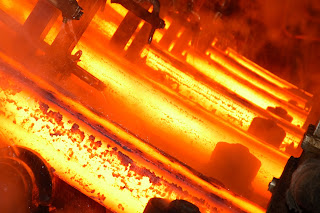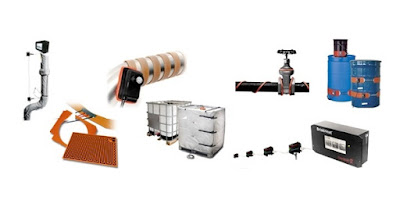 |
Successive cutaway view of self-regulating heat trace
cable showing various layers of material
Courtesy BriskHeat
|
Temperature of the environment surrounding process equipment and instruments can sometimes have a deleterious impact on its function. A common example is cold weather impact on the impulse lines connecting pressure gauges or transmitters to process piping in outdoor or unheated locations. While the process lines may be large, with sufficient mass flow and insulation to prevent freezing, this may not be the case for small diameter impulse lines. Liquid freezing in cold weather conditions can be a threat to process operation, depending on the type of liquid being used. A safeguard exists for impulse lines where the lines can be traced with a heat source, allowing for counteraction of the environmental conditions and maintenance of proper operation.
There are a number of ways to deliver heat to an impulse line. Recognize two essential goals, with the first being to prevent freezing or other changes to the fluid in the line that would impact the response or accuracy of the instrument reading. The second goal is related to the heat tracing itself. The delivered heat must not be great enough to impact the fluid in the impulse line and generate a false pressure reading. Optimally, delivering heat in a fashion that is limited to what is necessary to maintain the impulse line fluid in an ideal working state is best.
One example of heat tracing an impulse line is through the placement of a tube or small diameter pipe, located in close proximity to line, through which low pressure steam flows. Insulation is applied to the bundle and the steam line serves as a heat source. The tube transfers heat to the impulse line when steam flows. After the steam heats the impulse line, a steam trap accompanying the system collects condensate for return to the boiler. It is also conceivable that the steam line could ultimately vent to atmosphere, with no condensate return. There are a number of concerns that must be addressed in the design of the steam portion of this scenario, since it would be necessary to keep any condensate from freezing under all anticipated operating conditions, including process shutdown.
A second common solution for freeze protection of impulse lines is through the installation of electric heat tracing. Two-wire cable serves as protection against the cold. When powered, the heat from the cable keeps the line warm. Electric heat tracing is available in a broad range of physical configurations, including cables, tape, blankets, and other flexible and solid shapes. Control of the electric heat system can be accomplished with an external controller and sensor, or a self-regulating heat trace cable can be used. As with a steam heating system, there are some specific considerations for electric heat tracing. Thermal insulation is still considered a best practice. Electric power must be delivered to the installation, and a means of monitoring heat trace performance for faults or failure should be included in the design.
Share your heat tracing requirements and challenges for process piping and other industrial applications with a
product specialist. There are many options and product variants from which to choose. A consultation can help direct you to the best solution.





